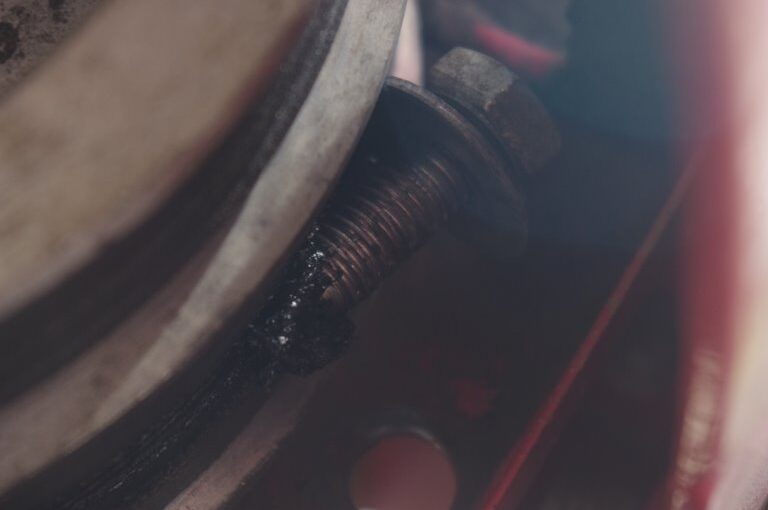The other night I was watching a utoob video of some off grid dude making the most extraordinary claims in relation to ‘off grid’ living. He was up in the far north of the US, and clearly ‘off grid’ means something different up there. Not being connected to the electricity grid, is what those words refer to down here. But I understand the guys point, it is just that all the talk about ‘the one true way to off-grid living’ rang false to me.
He had an interesting strategy though. He and his family would live in a very remote area where they constructed basic houses using the local materials. Then he’d sell the houses for profit, before moving onto the next project. You couldn’t do that down here due to building codes – talk about a serious buzzkill! However, we did a similar thing in the big smoke, but with older houses in need of fixing up. And I’m talking serious structural repairs, not some cosmetic makeover for the house. But overall the aim was the same, basically to minimise, then eliminate debt.
The only downside is that a person generates a sense of rootlessness when moving from place to place making mad cash – and the cash isn’t always guaranteed either. We lost a lot on our first house. And many years later, I noticed that someone had demolished the work we did do, talk about sending a strong message about that not being our finest work! Anyway, after years of moving around, even the most fervent wandering spirit goes in search of a place to put down roots.
I’m a long time fan of the series Grand Designs UK. It’s been in continuous production for 24 years, and the stories of people attempting to construct a unique house follow a similar story arc. Where they finish, that’s the intriguing bit. At first there is a good dose of hubris and laughs. The folks involved pretend that they’ll miraculously construct a unique house for less than the mad cash (not to mention oodles of debt) they have available, and that the thing will be completed in record time too. They all do it. You would think that the folks would have watched earlier episodes and say something honest, like: “we have no idea what we are doing, how much this thing will cost, and how soon it will be completed”. This season, a recurring theme has been the inflationary pressures, and already two builds were simply not completed, and it’s not like there is any time pressure to complete the things – they take what they take. Interestingly, in both cases, money concerns were cited.
The joke is that completing the construction of a house, is merely the beginning of a much bigger journey. Unless you’re rootless of course, then you sell up and move onto the next project. But to connect to the land and the wider area and community, is a whole different set of skills and experiences.
Did I mention that it all began with a light bulb? Truly, it did. The light bulb in the tall Victorian era reproduction lamp post out front of the house had failed. After a month or so, and with a few free moments, the lamp post was dismantled as I tried to work out what had gone wrong. Poor design meant that rainfall had gotten into the electrics and corroded connections. It was an easy fix, and a couple of drainage holes were drilled for good measure. The spiders appreciate the drainage holes! A replacement light globe was installed, and all was again good with the world.
Except that now the lamp worked again, the area on the other side of the lamp post (further away from the house), looked like: ‘not our finest work’.
The house construction took eighteen months for us to complete from beginning to the finalisation of the paperwork. We’d moved into an unfinished house in September 2010, but no matter, it was home. The final paperwork was completed not long afterwards. Since then we’ve worked towards making the land here work for us. There are so many things to do: firewood; water; electricity; shedding; paths; fencing; orchards; greenhouse. The house was the easy bit.
So, after fixing the lamp post, and admiring the ‘not our finest work’, and accepting that it was wanting, we decided to do something about it. That’s how the low gradient path project came to be. It’s not quick, it’s not easy, but it is satisfying. And the slowly developing path is super solid. It also solves a problem of winter access.
Getting from the house to the chickens wasn’t always easy. For the first eight years, the path was a goats track running through the shady orchard. Here is what it looked like in 2016:

There’s always a defining moment when change becomes necessary. That was me cracking the absolute sads, because the electric log splitter had fallen over whilst I was pulling it along that goat track. The machine weighs 90kg / 200 pounds, and at the time was very unwieldy (the machine has since been modified for improved stability). Something had to change.
By 2018, we’d begun constructing a four foot wide all weather path connecting the house to the chicken enclosure. It was a massive improvement on the earlier arrangements.
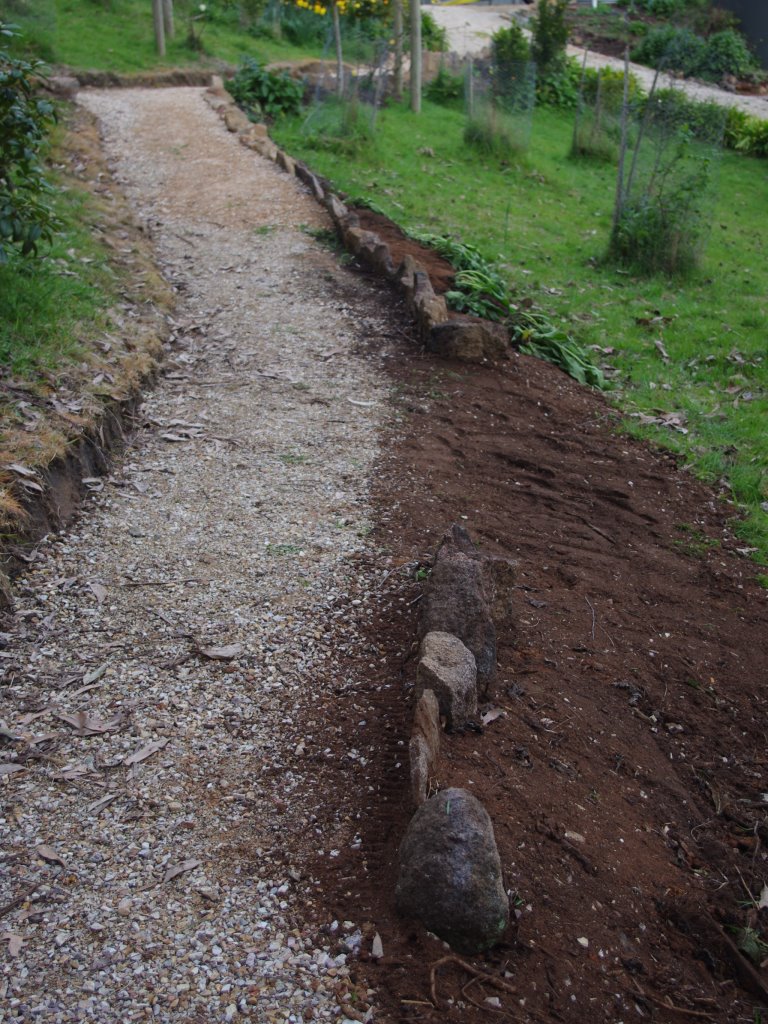

The new path was good, but the last little steep section climbing uphill towards the house was seriously steep. Pushing a wheelbarrow full of firewood, was seriously hard work. Sometimes a bloke doesn’t need to go to the gym!
As the years went on we purchased a number of machines to assist with the work around the property. The machines could mostly use the path, but it was tight and there were times the weight of the machines applied a lot of unnecessary pressure to the downhill side of the paths. The rocks used on that lower side of the path were never intended to support such weights.
We could do better, and that is where the light bulb came into the story, and the low gradient path project was born. The path was widened considerably, and the downhill side of the path is now supported by much larger rocks. Also, the steep section closest to the house has been built up with soil, and a rock lined drainage basin (the one with the large Tree Fern) was constructed so as to control the flow of water from in front of the house – which now has to travel under the elevated path via a culvert pipe.
And that’s what we’ve been working on lately. The project will take months to finish. It isn’t entirely necessary to do this work. A person hoping to construct the house and make some mad cash, would have long since moved on.
The low gradient path project requires a lot of soil and rocks. Fortunately, there are a couple of other projects on the go, that are delivering soil and rocks. One of those projects is a much larger firewood shed on contour with the house. The area set aside for the future firewood shed has to be levelled. Those ground works are providing a lot of soil. Also the rock wall in that area, which retained the soil in a very steep garden bed, was constructed almost a decade ago. And it’s not very good – soil washes over the top of it.
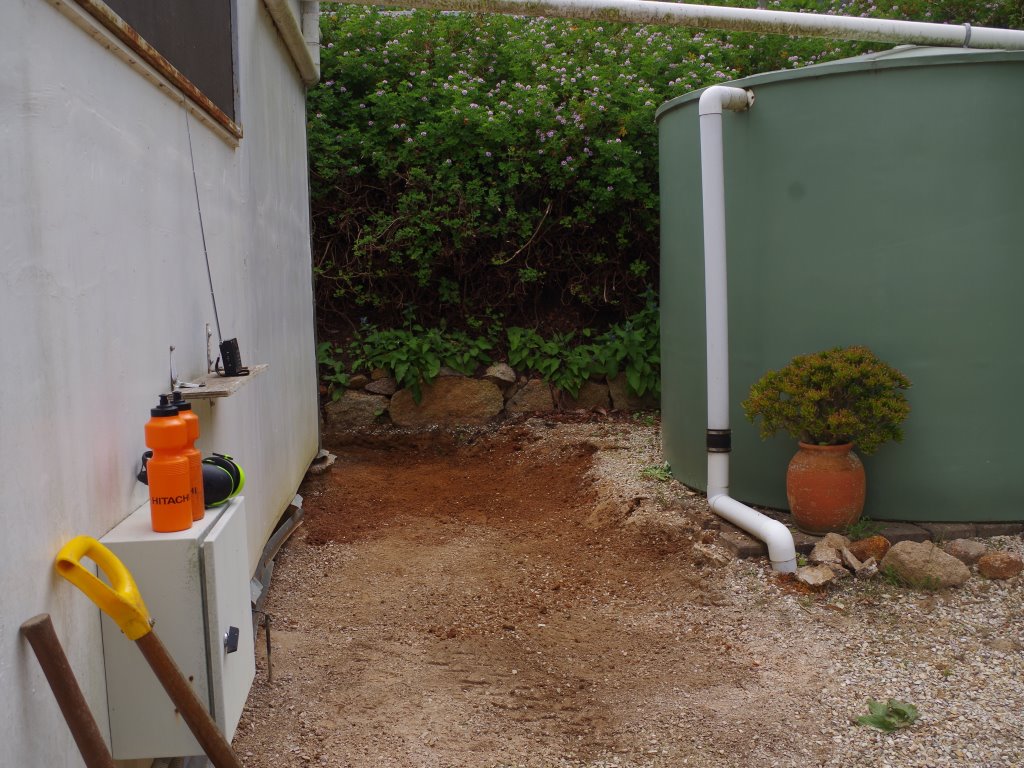
The above image shows the dodgy rock wall, and some preliminary digging which was done months ago. This week we spent two days excavating soil from the future firewood shed site. The dodgy rock walls were dismantled and replaced with two steel rock gabion cages. That rock wall when complete, will eventually require about five steel rock gabion cages, and two so far is a good start! An electric jackhammer breaks up the clay into solid clods. The rototiller then breaks apart the clods, and the now fine soil is shovelled into a power wheelbarrow and walked over to the low gradient ramp project. The contents of the wheelbarrow get dumped there, and they are used to build up the ramp.
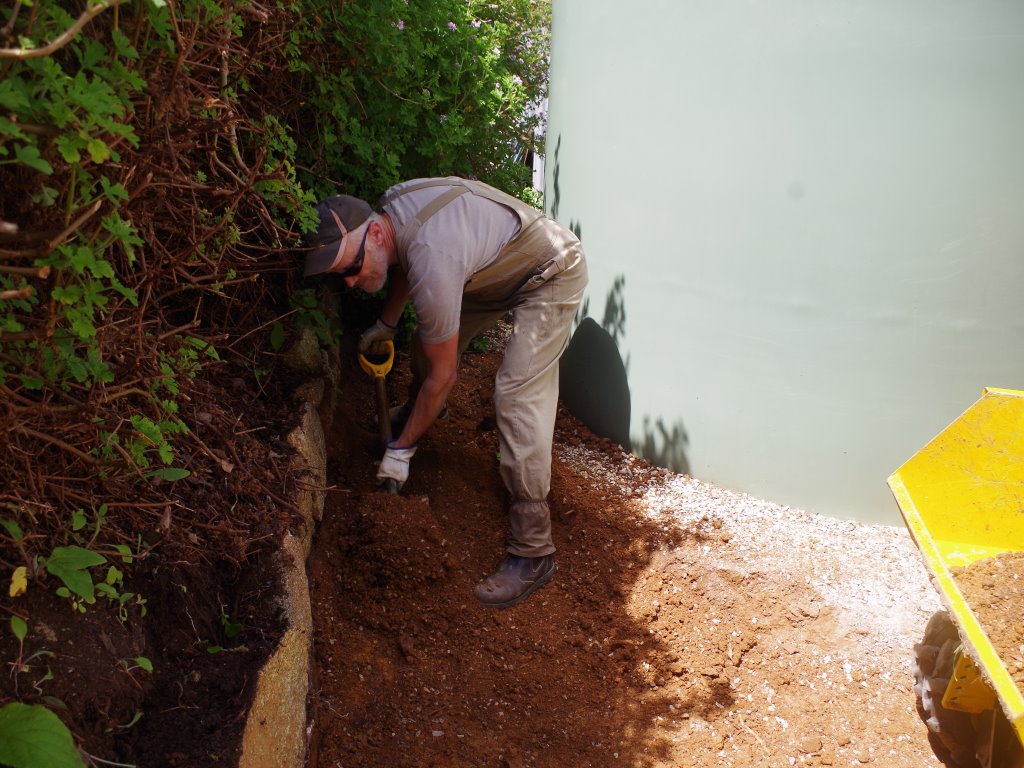

Once the soil is dumped on the low gradient ramp project, a rake is used to smooth out the surface. Compaction of the soil is achieved by simply walking on the path. A layer of the crushed rock with lime also sets the surface hard in only a few days.
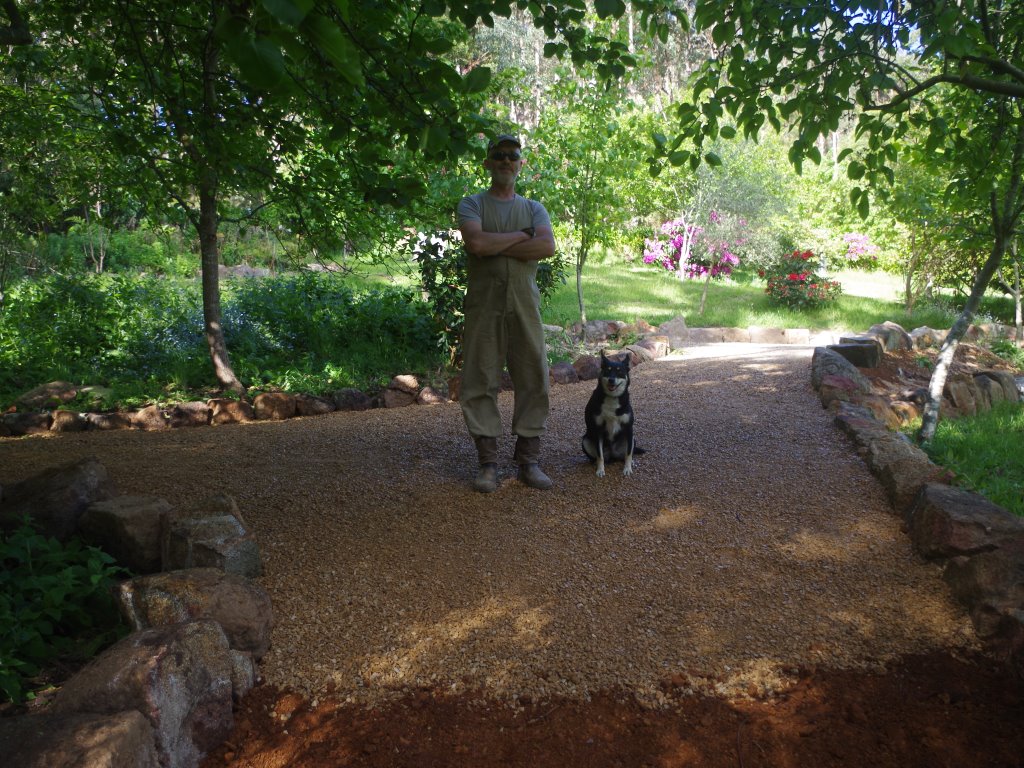

There’s still plenty of work to be done on that path project before it is completed.
At the end of the first day of digging, whilst returning the roto-tiller to its shed, smoke was seen coming from the gearbox. I immediately switched the machine off, put it into neutral and walked it back to the shed. A couple of days later we discovered that a bolt holding the arm for the reverse gear had worked it’s way loose, fell, and become stuck against the metal housing and a drive belt. It is not wise to re-use the bolt, so that was replaced. There is some damage to the belt, but it’ll probably be fine, maybe. Whilst we had the guts of the machine exposed, the roto-tiller was given a full service.
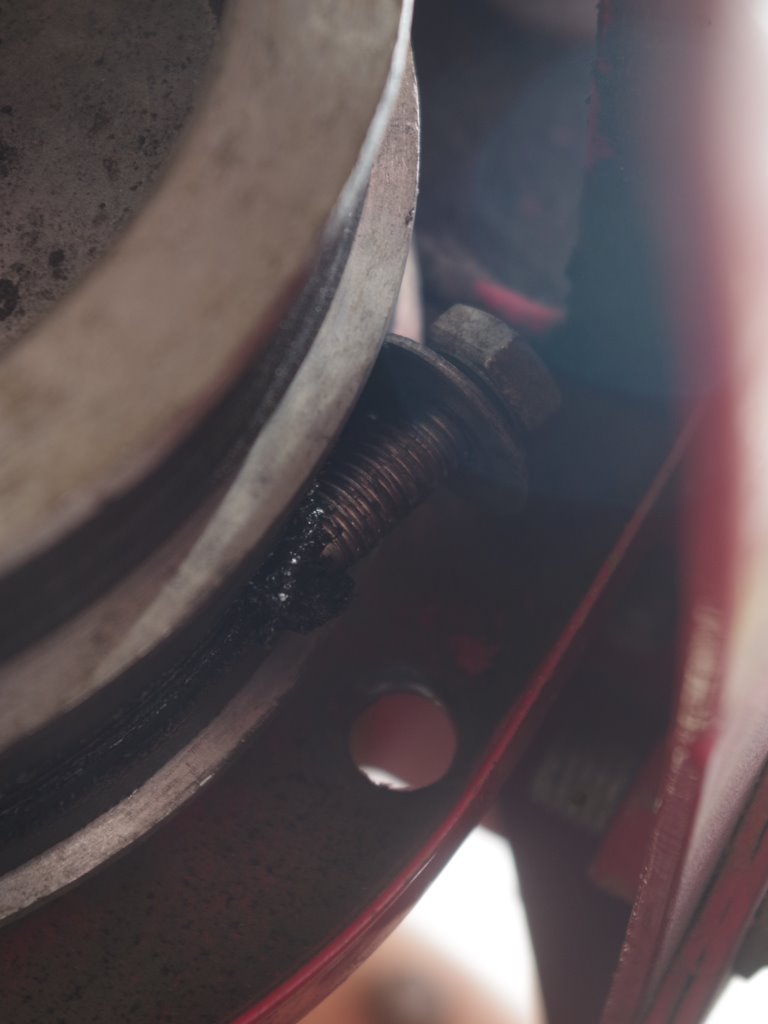
It was only this little corner of the continent where the October weather has been below the long term average. Every other part of the continent was hotter on average. All the same, I noticed a summer weather loving stick insect, had taken up residence on the house.

Tree frogs have also been taking advantage of the swimming opportunities in the dogs water bowl.

With October being quite cold, the tomato seedlings are weeks behind where I’d ordinarily expect them to be.

On the other hand, the Japanese Ginger plants are going feral! I can’t wait for them to produce the edible flowers.
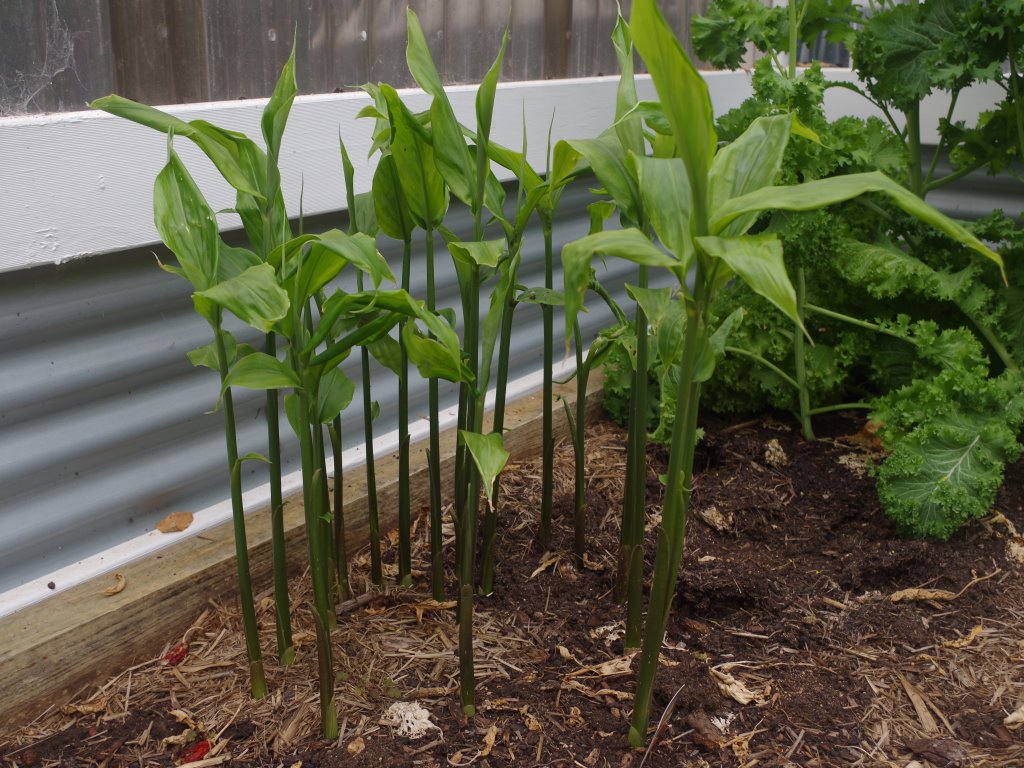
Onto the flowers:



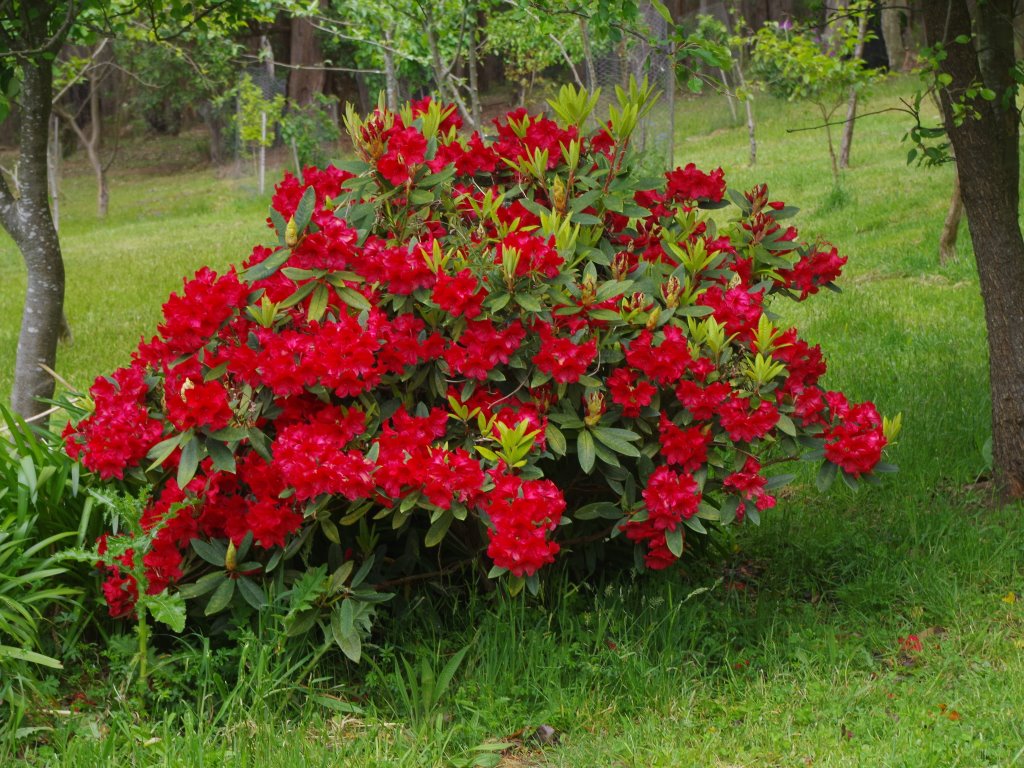
The temperature outside now at about 11am is 19’C (66’F). So far this year there has been 752.8mm (29.6 inches) which is up from last weeks total of 751.4mm (29.6 inches)
